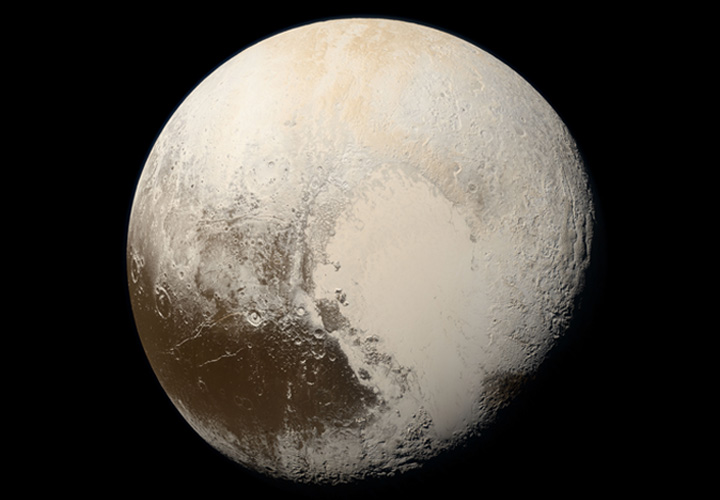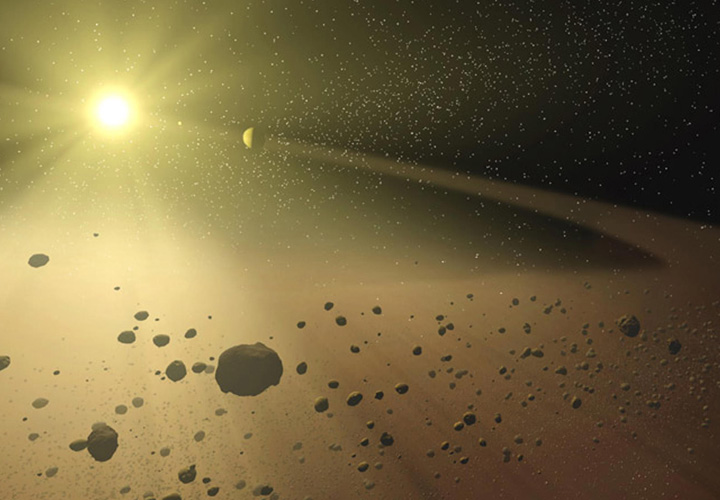15 Facts about Pluto: The Demoted Dwarf
Pluto ( ♇ , प्लूटो ) was once a planet but thanks to the discovery of Eris, it was demoted to the status of a dwarf planet. This tiny ball in space was just recently pictured from a short distance for the first time. This Flyby mission revealed many characteristics of this demoted planet. Here are some interesting facts about the ex-planet with a heart, Pluto: Pluto is the largest known Plutoid Tombaugh’s task was to systematically image the night sky in pairs of photographs, then examine each pair and determine whether any objects had shifted position. After the observatory obtained confirmatory photographs, news of the discovery was telegraphed to the Harvard College Observatory on March 13, 1930 The final choice of name was helped in part by the fact that the first two letters of Pluto. These are the initials of Percival Lowell, a wealthy Bostonian…
134340 pluto accrete amazing apparent magnitude article ashes atmosphere AU awesome axis bulge charon clyde tombaugh collisions core cronus demoted density dwarf planet dysnomia earth ecliptic elon musk energy equatorial eris extrasolar planets Facts flyby galaxies Galileo galilei giant god gravity harvard college observatory haumea helium hydra hydrogen iau iau resolution ice asteroid interesting isro jove jovian kerberos kuiper belt liquid water magnetic field makemake mass metallic hydrogen methane milky way minerva minor planet moon moons mountains mteorite mythology nasa nebula neptune new horizons ninth nitrogen ice nix oblate percival lowell planetesimals planets pluto plutonium polar premordial pressure protoplanets radiation radius religion rings roman rotation science solar solar system space spacecraft spacex spheroid storm styx sun tesla three conditions underworld uranus venetia burney volume warmer atmosphere water
15 Facts about Asteroid Belt: The Planet that Never Became One
Between tiny Mars and humongous Jupiter, lies a band of objects known as Asteroid Belt. This belt of ‘minor planets’ was supposed to be a planet but Jupiter’s gravity didn’t let that happen. So, it ended up as Sun‘s own ring system made up of asteroids and a dwarf planet. Here are some interesting facts about the Asteroid Belt: The Asteroid Belt is also termed the ‘Main Asteroid Belt’ or ‘Main Belt’ to distinguish it from other asteroid populations in the Solar System such as near-Earth asteroids and Trojan Asteroids Collisions became too violent and instead of fusing together, the Planetesimals and most of the Protoplanets shattered and formed the Asteroid Belt Appendix: Accrete, Primordial Computer simulations suggest that the original Asteroid Belt may have contained the mass equivalent to the Earth Although some scientists refer to the asteroids as residual Planetesimals, other scientists consider them…
1991 ry 7472 kumakiri accrete amazing apparent magnitude article asteroid belt asteroids atmosphere AU awesome axis basaltic c type carbonaceous ceres comets core crater disc dwarf planet earth elon musk energy Facts family galaxies Galileo galilei gravity greek groups heinrich olbers helium hemisphere hydrogen hygiea interesting isro juno jupiter kiyotsugu hirayama m type main belt Mars metal-rich methane milky way minor planets moon mteorite nasa near-earth asteroids nebula northern oceans outgassing oxygen pallas pioneer 10 planetesimals planets premordial pressure protoplanets radiation s type science silicate snow life solar solar system southern space spacecraft spacex star like sun tesla trojan asteroids v type venus vesta voyager water william Herchel

